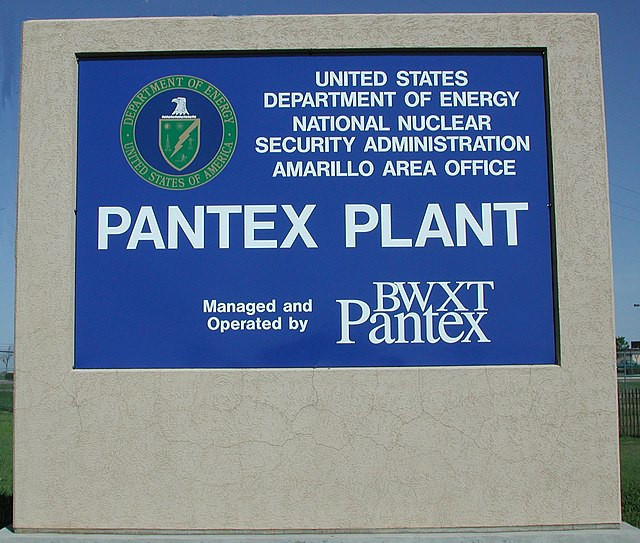The Pantex Plant, America's principal nuclear weapons assembly and disassembly facility, was temporarily shut down and evacuated due to the encroaching threat of wildfires in Texas. The Windy Deuce fire, fueled by strong winds, dry conditions, and unusually high temperatures, prompted an emergency response at the facility located near Amarillo, underscoring the growing challenges natural disasters pose to sensitive nuclear sites across the United States.
Laef Pendergraft, a spokesperson for the National Nuclear Security Administration's Production Office at Pantex, emphasized during a news conference that the evacuation was a precautionary measure. "We have evacuated our personnel, non-essential personnel from the site, just in an abundance of caution," Pendergraft stated, assuring that the on-site fire department was well-prepared for such scenarios.
Operations at Pantex, situated approximately 17 miles northeast of Amarillo, were resumed on Wednesday morning following the temporary closure. The facility, operational since 1975, plays a crucial role in the maintenance of the U.S. nuclear arsenal, having assembled its last new bomb in 1991.
Pantex | Pantex, the Primary United States Nuclear Weapons Assembly & Disassembly Facility Forced to Evacuate As Texas Wildfires Threaten the Pantex Plant | Massive Wildfires Burning In Texas Panhandle Force Evacuations#pantex #texaspanhandle #Texaswildfire#texaswildfires… pic.twitter.com/SzkB9WI37g — Clay "ReAwakening America" Clark Griswold (@TheClayClark) February 28, 2024
The Windy Deuce fire, which doubled in size to 90,000 acres with only 25% containment by Wednesday afternoon, is just one of several wildfires ravaging the Texas Panhandle. The situation has prompted Republican Governor Greg Abbott to issue a disaster declaration for 60 counties across the state, highlighting the severity of the fires.
Nuclear Weapon Factory Forced To Evacuate As Texas Wildfires Threaten Pantex Plant—Wildfires sweeping across Texas briefly forced the evacuation of America ’s main nuclear weapons facility as strong winds, dry grass and unseasonably warm ... https://t.co/7ECVDKsCbw pic.twitter.com/5BXLyUPnrI — System Publisher (@sypuber) February 29, 2024
The Smokehouse Creek Fire, another significant blaze, has consumed an astonishing 850,000 acres, surpassing the size of Rhode Island. With containment at a mere 3%, this fire threatens to exceed the record for Texas' largest fire, emphasizing the unprecedented scale of these natural disasters.
A massive wildfire raging across Texas has prompted widespread evacuations and road closures. The Smokehouse Creek Fire, now the largest among multiple wildfires in northern Texas, ranks as the fifth-largest wildfire in Texas history pic.twitter.com/M0dTvEMVyS — Reuters (@Reuters) February 28, 2024
Authorities have yet to determine the cause of these fires, which have devastated sparsely populated areas known for their rolling plains. Governor Abbott urged Texans to limit activities that could create sparks and to take precautions to protect their families and properties.
The National Weather Service has forecasted cooler temperatures and weaker winds, which may aid in controlling the spread of the active fires. However, the recent red flag warnings and fire danger alerts issued for several states reflect the heightened risk of wildfires due to a combination of high winds, warm temperatures, low humidity, and dry vegetation.
The Pantex Plant's brief evacuation serves as a stark reminder of the potential risks posed by natural disasters to the United States' nuclear infrastructure, which includes over 3,700 nuclear warheads and 54 nuclear power plants across 28 states. Experts assert that while nuclear facilities are designed with disaster resilience in mind, the increasing frequency and intensity of such events due to climate change present new challenges.
Jamie Kwong, a fellow at the Carnegie Endowment for International Peace, reassured that nuclear warheads are securely stored and unlikely to be directly impacted by wildfires. However, the broader implications of natural disasters on nuclear safety, particularly the potential for operational disruptions, warrant careful consideration.
The recent Texas wildfires, alongside past incidents like Superstorm Sandy and the 2014 Polar Vortex, highlight the vulnerabilities of nuclear facilities to extreme weather events. As climate change exacerbates the severity of natural disasters, the intersection of climate and nuclear safety is becoming an increasingly critical area of focus, not only in the United States but also in countries such as North Korea and Pakistan, which face their own unique challenges.






